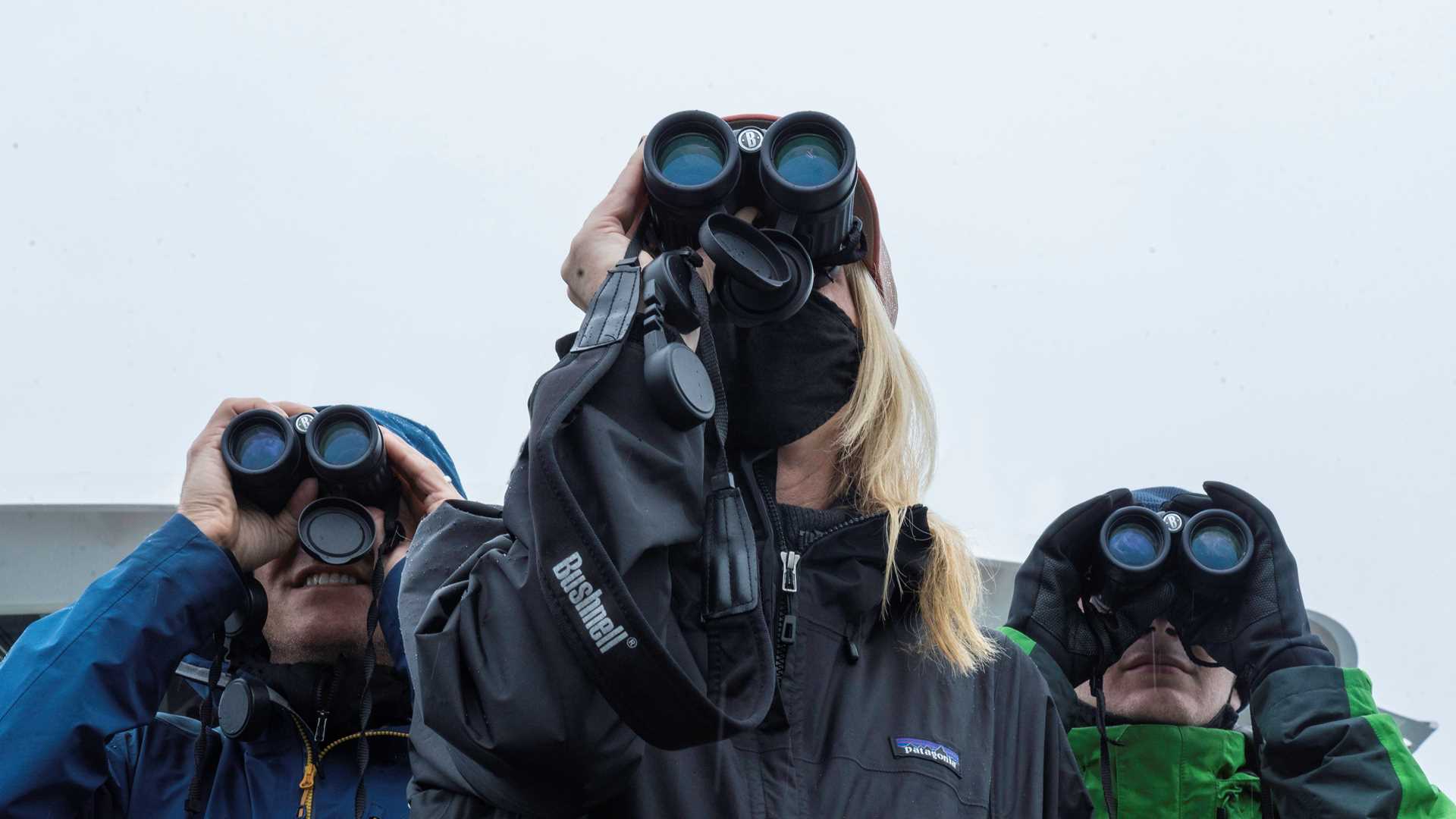In 1794, George Vancouver and his expedition team were stopped by a wall of ice as they sailed on the HMS Discovery mapping the region of Southeast Alaska. 85 years later, while investigating the geology of the area, John Muir paddled 55 miles past where the glacier halted Vancouver’s team’s progress. Today, onboard National Geographic Venture, we sailed an additional 15 miles northward though the bays and fjords that have been uncovered by glacial retreat in Glacier Bay National Park.
More so than any other National Park, Glacier Bay is defined by change. With the rapid retreat of glaciers across the park, the landscape is in a constant state of flux. Plant communities of different stages develop in the wake of retreating ice, providing food and habitat for a wide variety of wildlife. In some areas close to glaciers, this process is just beginning. In others, away from glaciers, it has been going on for hundreds of years. Along our route today, we had the chance to experience all of it.
We began our morning at the face of Johns Hopkins and Margerie Glaciers, two of the many tidewater glaciers snaking from the upper elevations of the Fairweather Mountain range down to the warm(er) ocean waters of Glacier Bay. From there, we sailed south along the entire length of the park in search of the wildlife that calls it home and were lucky to find a range of the life that has followed in the wake of the ice. Among the coastlines and mountainsides, our naturalist team and deck team spotted multiple coastal brown bears, mountain goats, puffins, and even the extremely rare pack of wolves. In the quiet of the fog, we watched three wolf pups saunter along the coastline for 30 minutes until being joined by their mother. A highlight for all onboard.
We ended our day at Bartlett Cove, the very spot that Vancouver sailed to on his 1794 expedition and the current park entrance. There, the forest showcased what the landscape looks like given 200+ years to develop in the wake of glacial ice. With guided walks through the forest, we got a glimpse into the region’s climax community of spruce and hemlock. A glimpse at what the rest of the park will soon look like.







